Looking into roofing options for a new construction project or updating your commercial properties? You’re in the right place. The roof you choose now can impact everything from energy costs to curb appeal for years to come. In this guide, Maupin Roofing takes a closer look at the right commercial roofing styles and materials to help you make a smart, informed choice.
3 Main Types of Commercial Construction for Roofs
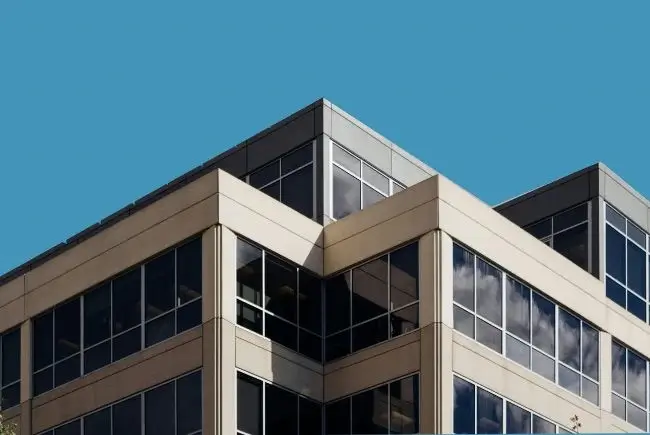
Before diving into materials or styles, it helps to understand the basic roof construction types you’ll encounter in any commercial roofing project. Knowing the roof’s structure helps building owners make the first step toward a well-chosen roof.
1. Commercial Flat Roofing
Most warehouses, shopping centers, schools, and retail spaces use flat roofs. You might even find the odd residential flat roof here and there. These are gently angled to let water drain off, but are generally horizontal.
They’re popular because they offer huge, uninterrupted areas that are great for rooftop equipment and heavy foot traffic. But they’re also vulnerable to water pooling if the drainage system isn’t adequately installed. That means the roofing membranes have to work right, with no cracks or leaks.
2. Low Slope Roofing
These roofing systems fall between flat and sloped categories, usually up to a 3:12 pitch. The slightly steeper roof slope helps rain roll off a bit faster, which reduces ponding. That said, they still require waterproof roofing membranes like EPDM, TPO, PVC, or modified bitumen to keep moisture out.
Low-slope roofs are often a smart compromise as they offer better drainage than flat roofs, are easier to access for services than steep slopes, and are compatible with single-ply systems.
3. Steep Slope Roofing
On commercial buildings, steep slope roofs above 4:12 are less common, but you might see them on office parks, hotels, or campuses where appearances and aesthetics matter. These pitches can use metal, asphalt shingles, or even tiles. They shed debris and drainage loads more efficiently, but installation is trickier and more expensive. All in all, these roofs tend to prioritize design over utility.
Types of Commercial Roofing Systems (By Material)

There’s a lot to consider when choosing roofing for commercial and industrial buildings, but the material you choose might be the most important piece of the puzzle. With so many different roofing materials available, the right commercial roofing materials can offer both durability and long-term cost savings.
1. Built-Up Roofing (BUR)
This classic choice uses multiple layers of bitumen and felt topped with gravel or cap sheets, saturated with hot asphalt. It handles foot traffic well and resists UV and hail damage. Its lifespan averages 20-30 years, and while installation is labor-intensive, it’s a tried-and-true waterproof barrier. Be aware, though: the weight is significant, and hot mopping presents safety issues.
2. Modified Bitumen
Modified bitumen roofing is a modern twist on BUR. It uses polymer-enhanced asphalt sheets applied via torch, self-adhesive, or cold adhesives. It’s more flexible in temperature swings, easier than classic BUR, and lasts around 15-20 years. Repairs are straightforward spot fixes. These are generally great for smaller buildings or more detailed roof contours.
3. EPDM (Ethylene Propylene Diene Monomer)
EPDM is essentially rubber roofing rolled out over your flat roof, leaving you with a smooth surface. It’s available in thick sheets, can be fully adhered, fastened, or ballasted, and lasts 25-40 years in many cases. Black EPDM holds up well in the sun and amidst hot air but isn’t reflective by nature, though white-colored options do exist.
4. TPO (Thermoplastic Polyolefin)
TPO roofs use a newer single-ply, heat-welded membrane that’s usually white and reflective. It offers energy efficiency by bouncing sunlight, and resists chemicals and UV. When installed well, it can last 20-30 years and is suitable for flat and low-slope roofs.
5. PVC Roofing
PVC is similar to TPO but even more resistant to grease, chemicals, and ponding water. It’s relatively more expensive, but some premium membranes last 30-40 years in ideal conditions. Seams are heat-welded, which is durable but needs certified installers for repairs.
6. Commercial Metal Roofing
When commercial properties have slopes or attractive architectural designs, metal roofing is a standout. Standing seam metal materials, galvanized steel, or aluminium materials can last 40-70 years, reflect sunlight, resist hail and high winds, and are 100% recyclable. Metal roofs promote energy conservation and require minimal maintenance.
7. Green Roofs or Eco Roofs
Green roofing systems hold soil and plant life. Great for stormwater control, insulation, and aesthetic value, but weight and maintenance are more significant. However, installation costs can be pricey, and the roof deck and structure need reinforcement. You also need irrigation and upkeep plans.
8. Spray Polyurethane Foam (SPF)
SPF is a foam roofing system, sprayed on as expanding foam. Then, roof coating systems like acrylic coatings are added for UV protection. It seals seams, fills odd shapes, adds insulation, and forms a seamless waterproof layer. Great for curved or detailed roofs, but proper application (e.g., safety protocols and coatings) makes it a specialty job. Over time, coatings may need reapplication.
How to Pick the Right Roofing Material

These are some of the key factors to think about when browsing through your options when it comes to roof materials or styles:
1. Match Your Roof Pitch and Drainage Needs
All commercial property owners have different needs. If your roof is nearly flat, you should lean toward BUR, EPDM, TPO, PVC, or modified bitumen roofing. Steep slope roofs open doors for metal, shingles, and maybe green systems. Pick a roofing material that works well with your slope, drainage setup, and rooftop layout.
2. Budget Now vs. Costs Later
Bulk-priced materials like EPDM and modified bitumen are budget-friendly upfront. TPO lands in the middle in terms of costs. PVC and metal cost more initially, but might save you money over the decades through fewer repairs and better energy efficiency.
3. Weather Resistance for Oklahoma’s Climate
In Oklahoma, commercial building owners can expect heat, UV, wind, hail, and more. Metal and PVC deflect sun rays, EPDM and TPO handle heat and hail well, while BUR survives high winds and heavy rain. Ultimately, it’s best to choose materials that can handle Oklahoma’s climate best.
4. Maintenance and Repair Ease
EPDM is a patch-and-go favorite. BUR needs manual repairs, while TPO and PVC need heat-welding gear to fix leaks. Metal might dent, but it’s generally low maintenance. The secret is to match your ability to maintain whatever roof material you choose.
5. Energy Goals or Eco Needs
If you prioritize energy efficiency, TPO, PVC, or reflective metal can lower your HVAC use. Green roofing materials also count towards building sustainability goals. These may also come with rebates or tax perks. PVC is recyclable, metal is recyclable as well, and EPDM can be, but isn’t always.
6. Aesthetic Preferences
Commercial buildings don’t have to be boring. Metal adds an architectural flair, while green roofs stand out. On the other hand, most membrane systems are flat and unadorned. So, keep this in mind when you’re choosing the right style and materials for your commercial building. Additionally, choose a roof that fits your brand, building, or city code.
7. Installer Quality and Certification
Some systems, especially PVC/TPO, need certified installers to guarantee heat-welded seams. EPDM is easier, but still detail-oriented. Make sure your roofing contractor is experienced, licensed, and works locally. Maupin Roofing provides commercial roofing in OKC, led by certified crews for all these systems.
Maupin Roofing Can Help You Find and Install the Right Roofing for Your Commercial Building
Picking the right roofing materials and styles can feel overwhelming, but you don’t have to figure it out alone. Whether you’re replacing an existing roof or starting from scratch, Maupin Roofing is here to help.
With a proven track record in the roofing industry, we offer cost-effective commercial roofing services that are tailored to your building and your budget. From materials to installation, we’ll guide you through every step of your roof replacement or upgrade.
Let’s make sure your commercial roof is built to last. Get in touch with Maupin Roofing today!
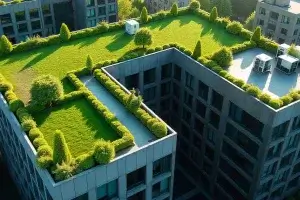
Green Roofs for Commercial Properties: Suitability, Types & Benefits
Green roofing systems replace or layer over traditional materials with soil, native plants, and engineered drainage systems that allow the roof to become a living
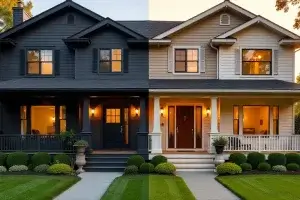
Boosting Curb Appeal with Exterior Colors: 12 Color Combos to Try
Before anyone notices your landscaping or your roofline, they notice color, which is why boosting curb appeal with exterior colors is such a powerful move.
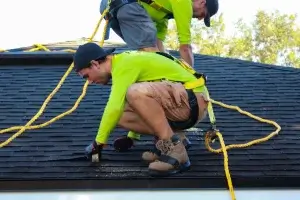
Residential Roof Maintenance Tips for Longevity
Your roof does more than cap off your home. It shields everything beneath it from Oklahoma’s heat, high winds, ice storms, and heavy rain. That’s
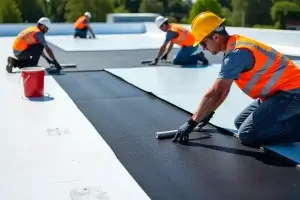
Modified Bitumen Roofs for Commercial Use: What to Know
Modified bitumen roofs for commercial use have become one of the most trusted options for flat and low-slope buildings for over a century. At Maupin
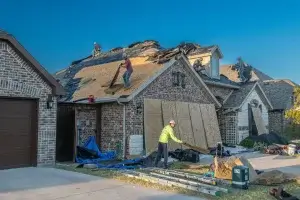
New Roof Installation Guide for Homeowners
As pros in the roofing industry, we know what really goes into a well-built roof and what can go wrong when corners are cut. A
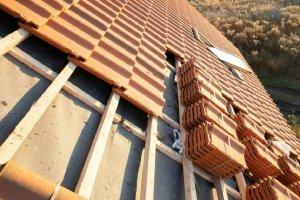
Best Time to Install a New Roof in Oklahoma
Something we often see is homeowners waiting too long to replace a worn-out roof, only to get caught in the middle of inclement weather or

